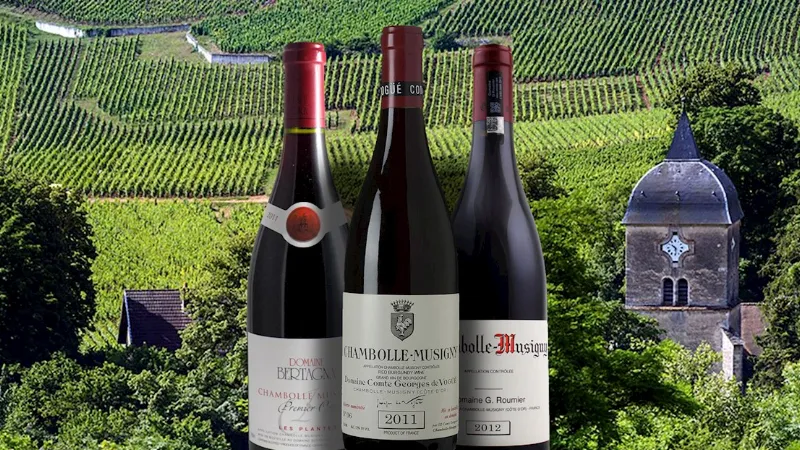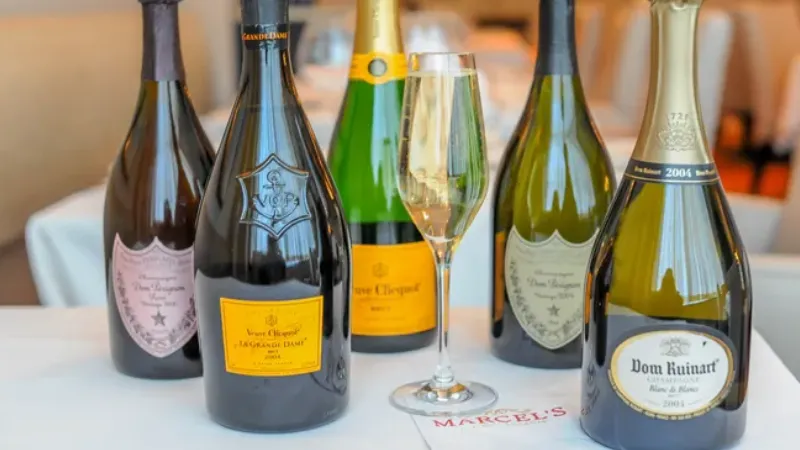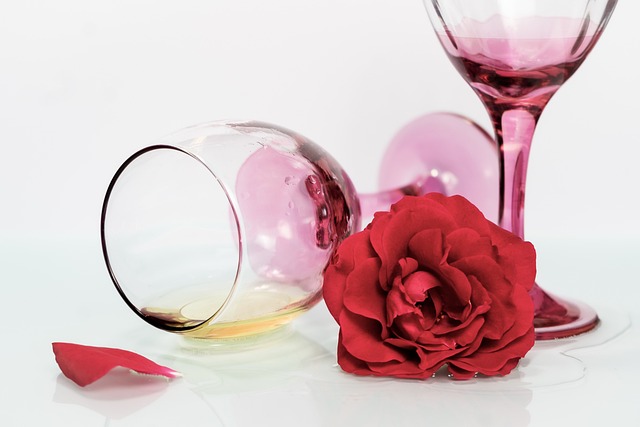The best red wine include: Banfi Rosa Regale Brachetto, Braida Brachetto d’Acqui 2019, Dal Forno Romano Vigna Seré Veneto Passito Rosso, Domaine Renardat-Fache Bugey Cerdon Sparkling Rose, Gerd Anselmann Pfalz Dornfelder, Giuseppe Quintarelli Recioto della Valpolicella Classico 2004…
The article will show you the best sweet red wines, display a thorough explaination about sweet red wine and give some helpful tips when making sweet red wine.
Less the type of grape and more the amount of time it spent on the vine account for the sweetness of wine, which tends to be sweet. It produces more natural sugars the longer it is left before harvest, making the wine sweeter.
If you’ve ever entered the wine section of a liquor store (or even a grocery store), the choice can be overwhelming unless you know what you’re doing. The list below is extremely helpful in this regard.
Table of Contents
Best Sweet Reds
In order to identify the best sweet red wines available at a variety of price points, we tasted our way through hundreds of bottles. We’ve also covered what foods go well with them so you can pick the best sweet red wines for you.
Banfi Rosa Regale Brachetto

This classy and enchanting sparkling red is part of Banfi’s acclaimed collection and comes from Piemonte’s Acqui region. We are particularly fond of this bottle’s candy red hue, which contrasts nicely with Banfi’s advances in clonal research and the accolades bestowed upon their renowned winemaker Rudy Buratti.
The excellent aromas of raspberry, cranberry, chocolate, and rose petal shouldn’t be overshadowed by the wine’s appearance, though. Serve this chilled to avoid serving it incorrectly; it is dry with scintillating acidity.
Braida Brachetto D’Acqui 2019

The 2019 Braid Brachetto a’Acqui, another sparkling wine from Italy, is a stunning light red with purple undertones.
Even a brunch buffet line or the dessert table could benefit visually from it. It has a fragrant bouquet that develops over the course of drinking the bottle and includes notes of rose and berries.
Many drinkers note the berries they smell when they taste a beverage. Cherries, cranberries, and strawberries are likely to be tasted.
In addition, there is a slight tartness that some people have compared to crabapple flavor.
Desserts, especially chocolate desserts, go perfectly with this wine. Additionally, it tastes delicious when combined with nuts and dried fruits.
Dal Forno Romano Vigna Seré Veneto Passito Rosso

This extremely rare passito from Dal Forno is sourced from vineyards planted in chalky-clay soils outside of the town of Tregnago, about an hour and a half west of Venice, Italy. In actuality, only six batches of the wine have been made over the past three decades. This is a once-in-a-lifetime experience and one of the most profound sweet wines you’ll ever taste, produced in the smallest of quantities.
The majority of this wine is made from corvina grapes, which are also used to make 15% of the blend, 20% of the croatina, and 10% of the oseleta. With sweet red berry fruit, red licorice, crushed stones, and candied violets coated in brown sugar, the outcome is decadent and rich. Juicy and brisk acidity frames everything, giving this wine that defies gravity freshness.
Domaine Renardat-Fache Bugey Cerdon Sparkling Rose

This fruity, sparkling rose is perfect for brunch, a bridal shower, or a poolside afternoon.
Its stunning pink color makes it an easy crowd-pleaser. Hand-picked and cold-pressed grapes are used to create this distinctive French wine. Fermentation continues in the bottle after the grapes are picked.
Light red fruits like strawberries and raspberries, as well as more delicate fruits like apples and melons, are noted in the flavor profile of this sweet wine.
A wide range of foods go well with it, though you might want to steer clear of particularly fatty ones as they will overpower the wine. Enjoy it with eggs benedict, waffles with chocolate chips, or savory crepes.
Gerd Anselmann Pfalz Dornfelder

The dark-skinned dornfelder variety is known for being a distinctively German grape that can reach its full potential in the advantageously mild climate of the country’s south-western Pfalz region (affectionately known as the “Tuscany of Germany”). This bottle is just one of the many reasons why the Anselmann estate in this area is among the best in the world.
The floral aromas, which are deep red in color, are complemented by hints of cherry, raspberry, dark fruit, vanilla, and spice. This wine has a medium body, a rich texture, is lightly acidic, and is actually on the dry side of sweet.
Giuseppe Quintarelli Recioto Della Valpolicella Classico 2004

Cabernet Sauvignon, Corvina, Rondinella, and other grape varieties are included in this delectable red Italian blend.
To produce an impossible-sweet yet opulent wine, the vintners carefully dried and then slowly fermented the grapes.
Since the notes of caramel and baking spices are so strong, many wine connoisseurs favor to drink this wine during the holidays.
Desserts like gingerbread or panettone go perfectly with it. It also pairs well with cheese.
Although the nose is more spice-forward than sweet, the wine itself tastes of raspberries, blackberries, and sumptuous caramel. The flavor profile isn’t overly sweet, making it easy to pair with sweet foods.
Graham’s 20 Year Old Tawny Port

The phrase “old tawny port” may call to mind specific ideas about this wine’s flavor, and they probably aren’t entirely wrong.
This is a traditional port wine, as suggested by the name, with complex flavors and a deep sweetness.
You can pick up some tobacco and smoke aromas, as well as chocolate and burnt fruit, on the nose.
Most sommeliers who sip it taste cooked fruits when they do, such as pineapples and peaches, both of which become very sweet when heated. Apricots and other sweeter dried fruits are also discernible in the flavor.
This port wine is best enjoyed after dinner in the evening. You can eat it with nuts, dark chocolate, or cheese and crackers.
Jam Jar Sweet Shiraz

As their name might imply, Jam Jar specifically set out to make a high-quality sweet red when they created this sweet shiraz. Shiraz fruit thrives in hot climates, so the Western Cape vineyards of South Africa are the perfect place to grow proper grapes. This sweet wine also doesn’t contain any extra sugar.
This wine features a veritable medley of dark and red berries, including chocolate, which is not a berry but is made to appear as one in this wine. Bold, tannic, and moderately acidic, this wine pairs well with flavorful steaks and pork dishes.
Kourtaki Mavrodaphne of Patras

It stands to reason that the Greeks, who are credited with creating dramatic theater, would be able to create a wine with such a dramatic flavor and a sweet pathos. The Kourtakis family established their winery in 1895, and they are still one of Greece’s most illustrious wine producers today.
This bottle smells strongly of fig, raisins, and brown sugar, evoking a fine port. Additionally, it has a strong chocolate flavor, which may help to explain why it goes so well with real chocolate.
Lini 910 Labrusca Lambrusco Rosso

This unusual sweet Italian wine is tangy and has notes of herbs, minerals from the earth, and spices.
Additionally, it has the aromas and tastes of berries and fruits with deep red skin. Check out this red wine from the Lambrusco region and see if you can detect any blackberries, cherries, or raspberries.
This wine is suitable and intriguing to pair with a variety of foods because of its depth and distinctiveness.
A salty fish dish, an acidic chicken dish, or even braised beef with tomatoes would go well with it.
You’ll discover that the various dishes enhance different facets of the wine’s flavor. Having barbecue is a good combination.
Philip Togni Ca’ Togni Sweet Red

Legendary in the industry, black hamburg grapes are used to make this organic dessert wine, which is made by winemaker Philip Togni himself from his own harvest. The renowned South African dessert wine constantia served in this bottle was Togni’s inspiration, but he gave it a unique Napa Valley twist for an unforgettable tasting.
Black cherry, prune, and fig aromas join floral aromas in overpowering the nose. On the palate, a kiss of acidity supports notes of chocolate and spiced tea. In a good way, the finish lingers like an amiable house guest.
Quinta Do Vesuvio Vintage Port Capela 2017

The sweet fortified wine known as port, which has long served as the industry standard for Portugal’s wine industry, is available in a variety of styles, some of which are meant to be consumed young and others of which are meant to age for a significant amount of time. The 2017 Capela from Quinta de Vesuvio, a vintage port from a winery that dates back to the middle of the 1500s, falls firmly into the latter category. Many industry experts advise delaying opening this bottle until 2030, and others predict that it will keep getting better for another two or three decades after that.
A generation’s worth of patience will be rewarded with lovely aromas of black tea, lavender, blueberry, and quince, but it’s clear that this isn’t a bottle we’ll possibly drink this Tuesday. The palate is bursting with alluring berry, licorice, and mahogany flavors that will only get more refined with additional aging. When you open it in ten years or more, make a note to yourself to pair this elegantly-crafted beauty with hearty meats and cheeses.
Read about: How Long Does Red Wine Last After Opening?
San Antonio Cardinale Red Blend

Sweet and cooling, this red wine is inexpensive.
Consider using this wine to make sangria if you enjoy a naturally sweet beverage. The mixture is palatable with almost anything and is simple to drink.
The San Antonio Cardinale has a jammy, light flavor and a nose to match when consumed on its own.
Neither the smoke nor the caramel of heavier sweet wines are present in the fruitiness, nor is there any sugar to prevent it from being overly filling.
It pairs well with pasta, chicken, vegetables, sweets, and even red meat, making this wine perfect for parties.
Both grocery stores and liquor stores carry it widely. It can be kept on hand in case guests drop by or brought as a hostess gift.
Tobin James Zinfandel Late Harvest

The rich Paso Robles vineyards in California have helped winemakers Tobin James and Lance Silver develop their signature style. with this sweet and spicy zinfandel. For those looking for high-quality wine, their tasting room resembles a Paso Robles hub. This bottle contains that joyful spirit.
Plum, blueberry, dark chocolate, raisin, and spice are among the flavors present. With lively acidity and soft tannins, this wine is not overly sweet. This goes well with General Tso’s chicken or barbecue chicken wings.
A Quick Intro to Sweet Red Wine
While many people mistake a red wine’s fruity flavor for sweetness, residual sugar is the true indicator of a sweet red wine.
Red wine that is sweet contains more than 30g of residual sugar per liter.
Let’s look at wine’s sweetness levels to help you better understand how sweet your wine is.
- Sec (Dry): A dry wine with very little residual sugar
- Off-dry:Has residual sugar levels in the 0.6% to 1.4% range
- Demi-sec (Half dry):Medium-sweet wines with medium to high acidity, like Zinfandel
- Late Harvest:Made from grapes that are harvested later than usual (overripe grapes have concentrated and sweeter juice)
- Dessert:Sweet dessert wines with around 5-15% residual sugar
- Doux:Sweetest of Champagnes or sparkling wines, with over 50g of residual sugar per liter
Apart from sweetness, sweet red wines are also distinguished by lower alcohol content.
There’s a good chance a wine bottle will be sweet if it has a low alcohol content. However, there are exceptions; a German Riesling can contain up to 12% alcohol and still be exceptionally sweet.
Additionally, traditional red wines like Cabernet Franc or Merlot lack the full tannic flavors of sweet red wines, in contrast to their dry counterparts.
Here’s a quick cheat sheet for some most-favored reds:
Sweetness Levels:
- Very Sweet: Ex. Tawny Port, Ruby Port, Vin Santo Rosso
- Sweet: Ex. Lambrusco, Rosso Dolce, Brachetto D’acqui, Beaujolais Nouveau
- Medium Sweet: Ex. Zinfandel, Garnacha, Malbec, Australian Shiraz
- Dry: Ex. Merlot, French Syrah, Pinot Noir, Sangiovese
- Extra Dry: Ex. Chianti, Cabernet Sauvignon, Tempranillo, Nebbiolo, Tannat
Invest in Sweet Red Wine
Sweet red wines are ideal for long-term aging because of their high residual sugar and harmonious acidity.
Vintage Port and other fortified sweet red wines age well for 20 to 50 years, and in some cases even longer.)
In addition to commanding high prices at auctions, they are able to mature and develop complex flavors. For instance, at a 2018 Christie’s auction, a 5-gallon “demijohn” of 1846 Old Sercial Madeira, another fantastic bottling, brought $39,200.
Some outstanding sweet reds exhibit strong price appreciation as well.
As an illustration, consider the 1993 Avignonesi Occhio di Pernice Vin Santo di Montepulciano. In 2021, it cost $766 as opposed to 2019’s $479, a 59% increase.
Some sweet reds do not, however, yield such good returns.
A reputed online wine investment company like Vinovest can help you select the best bottle for your collection and also safely store it until maturity.
Your wine can be sold whenever you want thanks to the platform. The value of fine wine typically peaks after 5 to 20 years, though.
Your advisors will advise you on the best options for liquidity and the ideal selling window. They’ll assist you in maximizing your profits and navigating a variety of market situations.
Let’s now examine the various available styles, their construction, and other factors.

Sweet Red Wine Styles
International production of sweet red wines is widespread. In Australia, they’re called “stickies” and Cali produces rare fortified reds with non-Port influences.
Let’s examine the various categories of sweet red wines.
Sweet Sparkling Red Wine
If you’re in the mood for a bottle of red bubbly, try these:
- Brachetto: This Italian wine from Piedmont pairs well with chocolate thanks to its floral aromas and vibrant cherry, strawberry, and berry flavors.
- Moscato: This muscat-grape-based wine is renowned for its sweet peach, honeysuckle, and orange blossom flavors.
- Shiraz: Shiraz grapes are used to make sparkling Shirazis in Australia. The flavors of chocolate and black pepper are very distinct.
Sweet Still Red Wine
Red wine that is still has no bubbles or carbon dioxide in it and is not sparkling.
- Dornfelder: This rich wine, which is from the German states of Rheinhessen and Pfalz, has a flavor that is intensely fruity and floral in sweetness.
- Schiava: In the Italian region of Trentino-Alto Adige, schiava is a fruity wine produced. It can be a little on the dry side, but the bold, sweet cherry sauce and cinnamon flavors are delicious.
- Concord wine: It is a fruity, sweet red wine made from the Concord grape, which is indigenous to North America.
Fortified Red Wine
In comparison to other wines, fortified wine contains more sugar and alcohol.
- Lambrusco Rosso (Red) & Lambrusco Rosato (Rose): Over 60 known varieties of the Lambrusco grape are used to make these Italian lambruscowines. Lambrusco has flavors like rhubarb, raspberry, and even pink grapefruit.
- Brachetto d’Acqui: The Brachetto grape, a Piedmont native, is used to make Brachetto d’Acqui. Red rose, raspberry, and black cherry make up the aroma of this wine.
- Port: The Douro region of northern Portugal is where the enduringly well-liked Port Wine is produced. Its key notes include black cherry, plums, chocolate, and cinnamon.
- Banyuls: In the French county of Roussillon, old vines are used to make the fortified dessert wine known as Banyuls. Dark chocolate, baked prunes, and mint are the main tastes of this wine.
- Black Muscat: This sweet red, which features flavors of candied apple, strawberry, violet, and cinnamon, is made from the Black Muscat grape.
- Madeira: The Madeira region of Portugal is where this dessert wine is from. It has flavors of burnt caramel, walnut oil, and orange peel.
- Marsala Rubino: Sicily, Italy is where the flavorful Marsala wine is made. Tobacco, brown sugar, stewed apricot, vanilla, and other flavors are all present.
Dry Red Wine Styles With a Sweetness
The word “dry” may be the antithesis of sweet, but some dry wine falls on the sweeter side of the spectrum as well.
- Amarone: Amarone is a complex wine with notes of black fig, green peppercorn, and cherry liqueur that has been fermented for over 45 days.
- Barbera d’Asti: There are traces of nutmeg, boysenberry, raspberry, and clove in this sophisticated Italian Barbera wine.
- Dolcetto: Piedmont is the home of the Dolcetto grape, which means “little sweet one.” The flavors of dolcetto wine include licorice, blackberries, and almonds.
- Beaujolais Nouveau: Using Gamay Noir grapes, Beaujolais Nouveau is a sweet, light wine. It tastes like bubble gum, dried fruit, smoke, mushrooms, and smoke.
How is Sweet Red Wine Made?
Here are six methods used in the production of sweet red wine.
Interrupting the fermentation
Wine can be made sweeter by stopping the fermentation process and removing the yeast, which leaves the wine with some remaining sugar.
Some wines are fortified with a spirit like brandy to stop fermentation early (like Port wine, which has an alcohol content of over 17–18% by volume). The spirit eliminates the yeast, leaving sugar behind.
Using naturally sweet grapes
Grapes with naturally high grape sugar content include Moscato, Grenache, and Petit Manseng.
As the alcohol content increases during fermentation, it naturally kills the yeasts and halts the process before all the grape sugar is converted to alcohol. The resultant wine has a lot of residual sugar, which makes it sweet and heavy.
Over-ripening the grapes
Some winemakers concentrate the grapes by leaving them on the vine for a long time, which raises the sugar level of the grape juice. These wines are called “Late Harvest” wines.
Using botrytized affected grapes
A winemaker can also take advantage of the naturally occurring fungus called “noble rot” to produce concentrated grapes.
Noble rot or “Botrytis cinerea” is a grape fungus that readily dehydrates the grape and concentrates the grape juice, producing sweet wines.
Freezing the grapes
Making ice wines like Inniskillin is frequently accomplished using this technique.
The grape is frozen while it is still on the vine to prevent the fruit’s sugars from freezing. After being frozen, they are then pressed, and the stems and seeds are eliminated before fermentation.
Adding a sweet component to the blend
This technique, which is popular in Germany, involves blending unfermented grape juice and grape skins with the wine.
Is Sweet Wine Same as Fruity Wine?
When it comes to sweet red wine, it is simple to mistake fruitiness for sweetness.
The sweetness comes from the wine’s residual sugar and depends more on your taste buds. On the other hand, your sense of smell is credited with fruitiness.
Strong fruity notes will be noticeable regardless of the wine’s sweetness if it has a low tannin content as opposed to a high tannin wine, which tends to hide the fruit in the wine.
FAQs
Are Sweet Wines Made by Adding Sugar to Dry Wine?
This is generally not a traditional production technique, and none of the bottles in this lineup use it. However, some more affordable bottlings may obtain their sweetness by adding sugar to finished wine. Champagne, which has sweet varieties like sec and doux, is a notable exception. Champagne gets its sweetness from the addition of sugar to help with secondary fermentation. However, in most cases, the natural sugars found in the grapes themselves are what give sweet wines their final sweetness.
Read about Does Red Wine Vinegar Have Alcohol?
Are All Sweet Red Wines Dessert Wines?
Other sweet red wines in this selection, like lambrusco and brachetto d’acqui, really shine as an aperitivo before dinner or even as an accompaniment to the meal itself. Richer sweet red wines, like port and passito, are typically enjoyed with dessert (or, for that matter, as dessert).
Final Thoughts
You can see that sweet red wines aren’t only good with dessert. Many different courses and even more different dishes go well with sweet red wines. If you enjoy tasting sweet red wine, there are many different flavor profiles, grape varieties, origin zones, and other factors available.
Red wines, or wines in general, can be introduced to well with sweet red wines like sweet merlot or sweet shiraz. In general, they are more palatable than the classic Bordeaux and Cabernet varieties. While in no way complete, this list of best sweet red wines might give you a good idea as to where to start.









